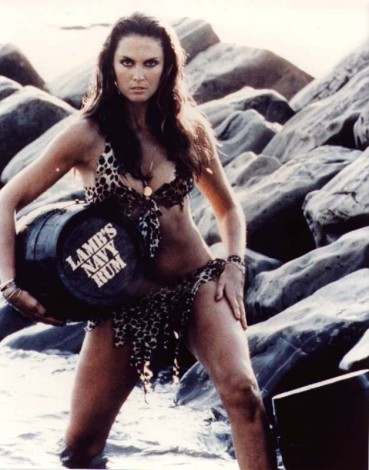| Vintage Pulp | Jun 19 2018 |

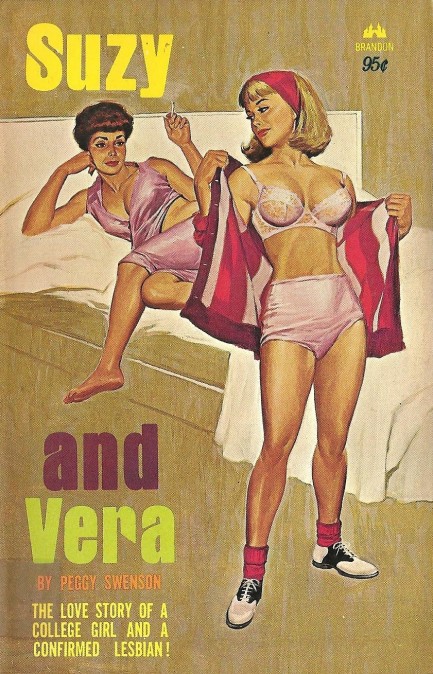
There was a time when her panties probably were considered unbelievably sexy. We're glad that time passed, though with the waistlines in women's fashion creeping back up—harkening to the era when it was illegal to show a navel on television or in movies—will it be long before panties turn into parachutes again? We're on record as hating high waistlines on undergarments. Let's pray to the Roman goddess Clotho that sense prevails before that happens. She isn't technically responsible for clothing, but she does spin the threads that determine the course of people's lives. Presumably that includes fashion designers. 1964's Suzy and Vera comes from author Peggy Swenson, aka Richard Geis, last seen around these parts writing the sleaze classic Lesbian Gym. The same artist painted the covers for both books, looks to us. Some say it's Fred Fixler, but we think it's someone charged by Brandon House with producing work in a similar style. And a nice style it is. But Fixler? We think not. We'll keep researching this.
| Vintage Pulp | Jan 14 2017 |

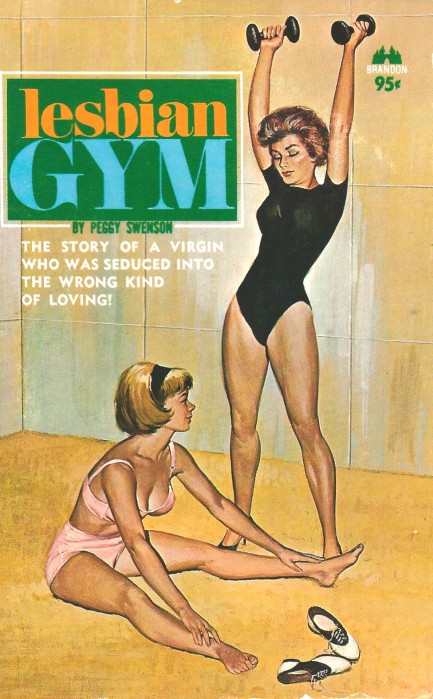
Above, a cover for Lesbian Gym from Brandon House, by Peggy Swenson, aka Richard Geis, copyright 1964. This one caught our eye because the Pulp Intl. girlfriends are always mocking the guys in their gym, whose apelike nature—so they tell us—emerges rather strongly there. We can't comment because we don't go to the gym. We do a bit of heavy lifting at the local bar, though. Good thing we're naturally skinny. A couple of sources attribute this cover to Fred Fixler, but we think they're wrong. Keep this in the uncredited bin.
| Vintage Pulp | Sep 11 2014 |

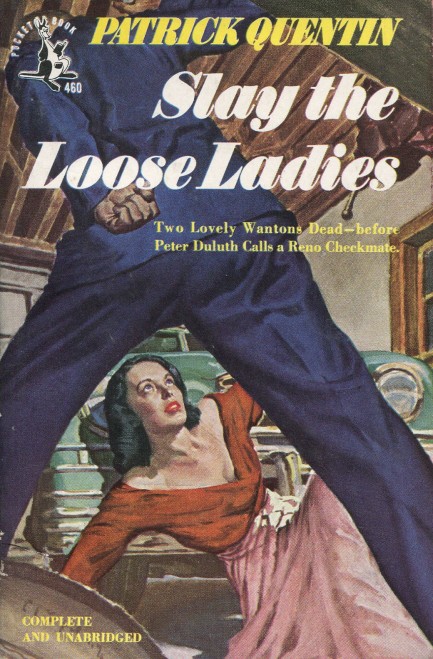
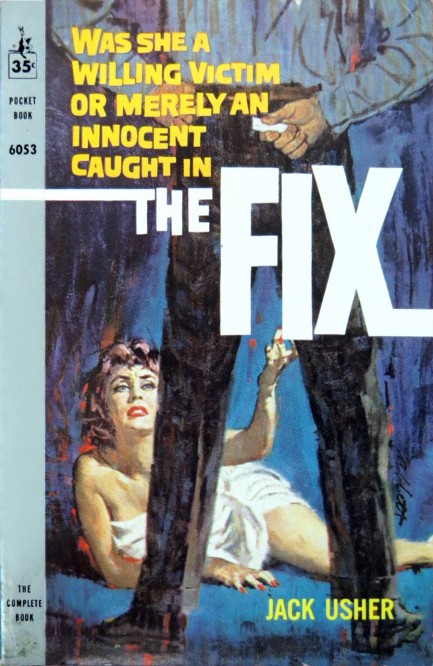
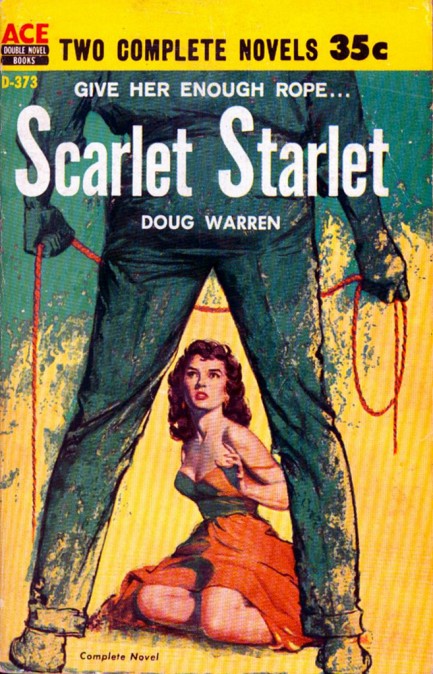
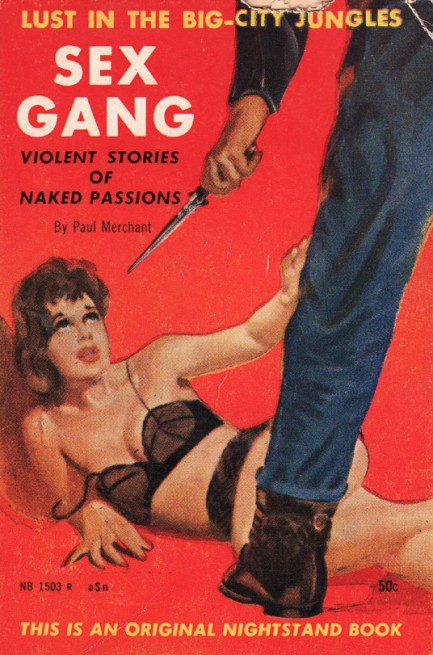
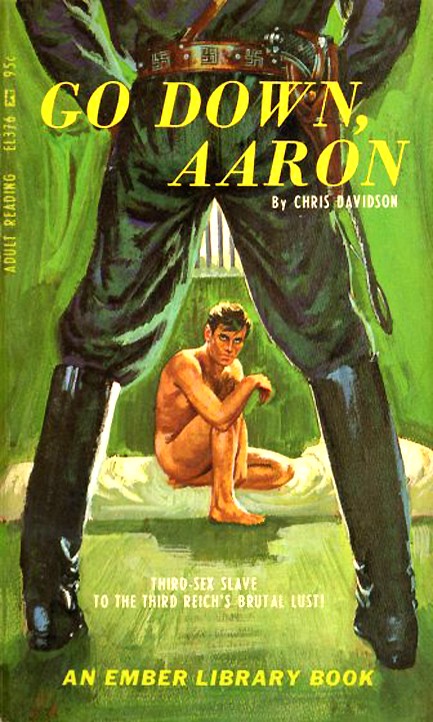
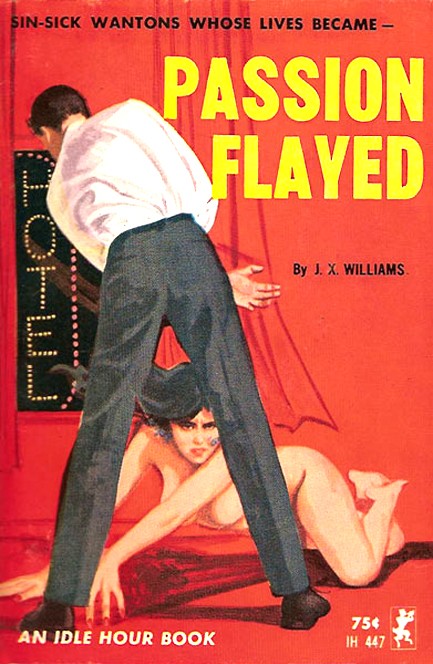
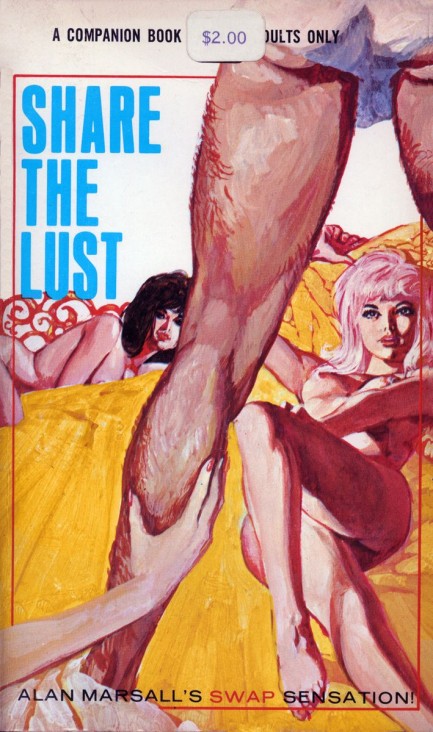
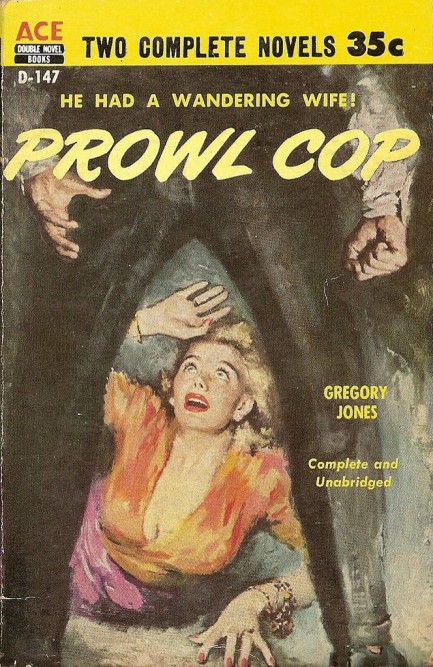
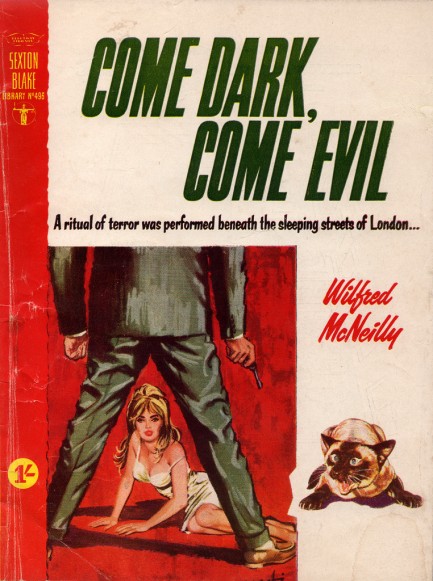
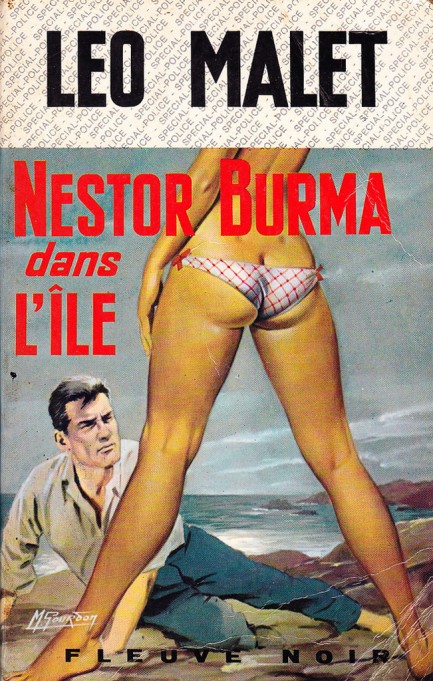
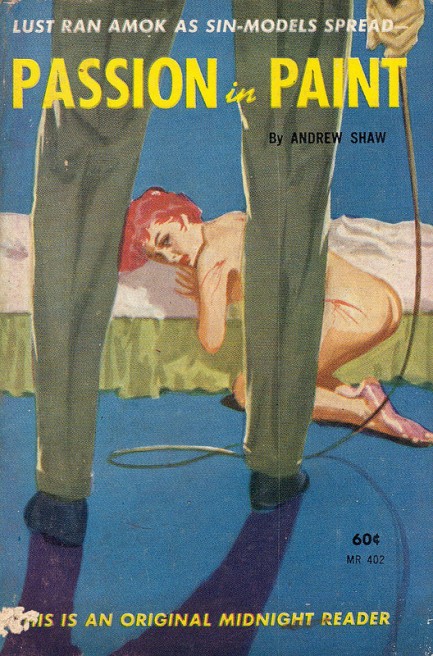
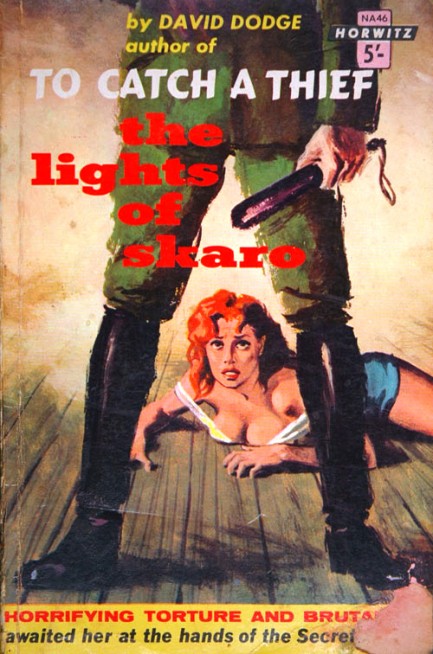
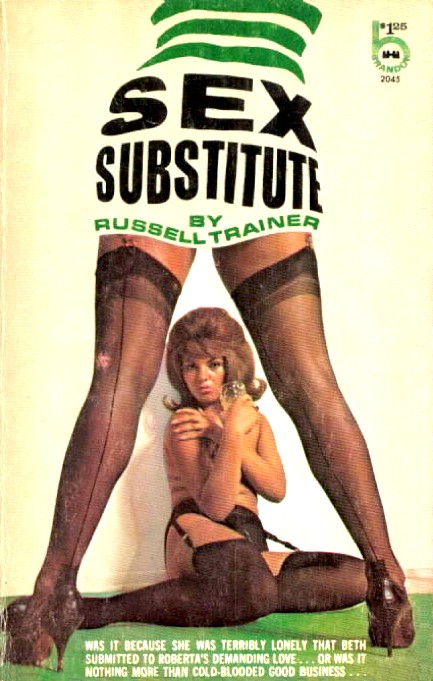
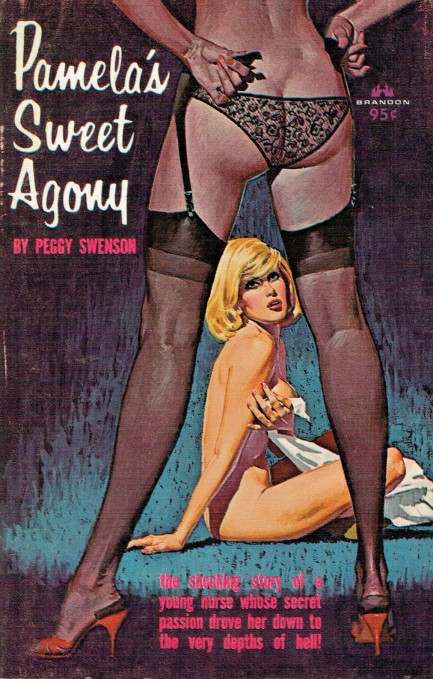
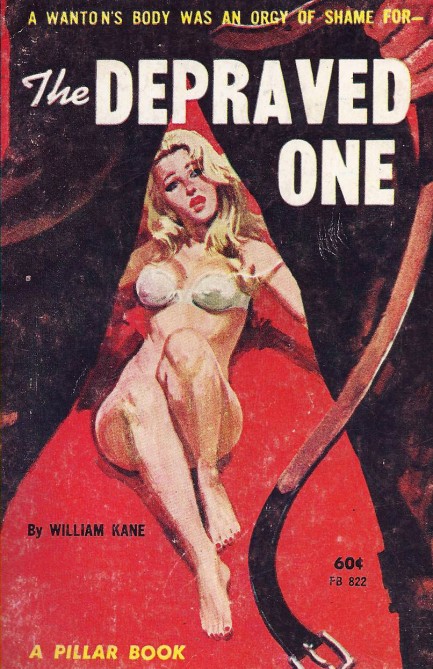
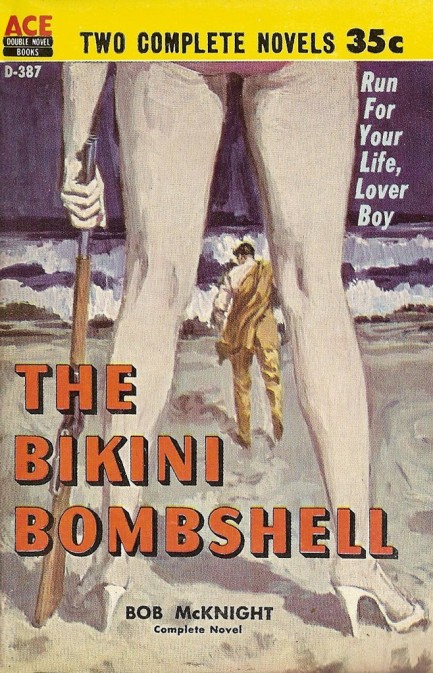
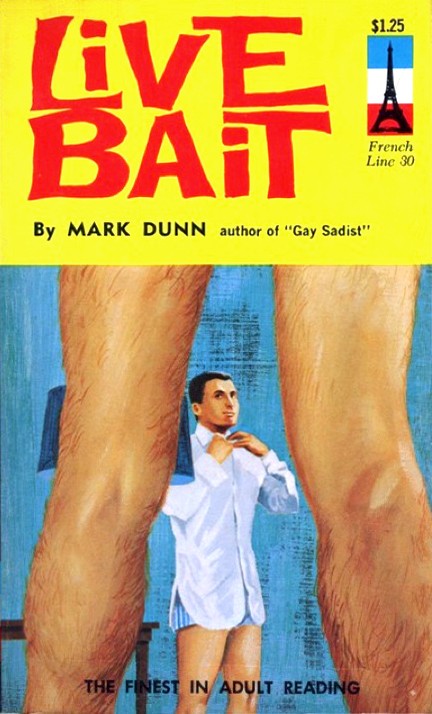
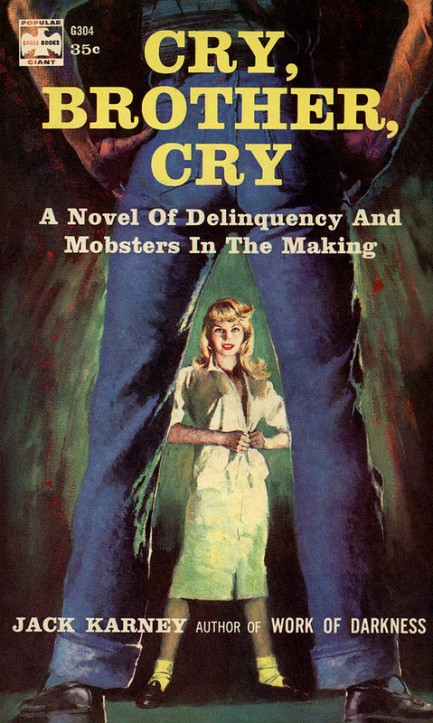
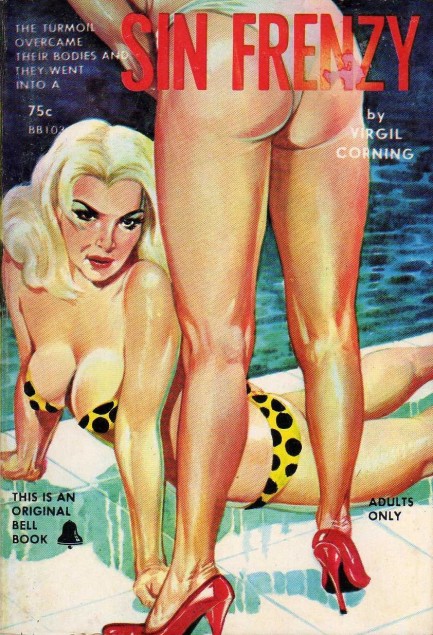
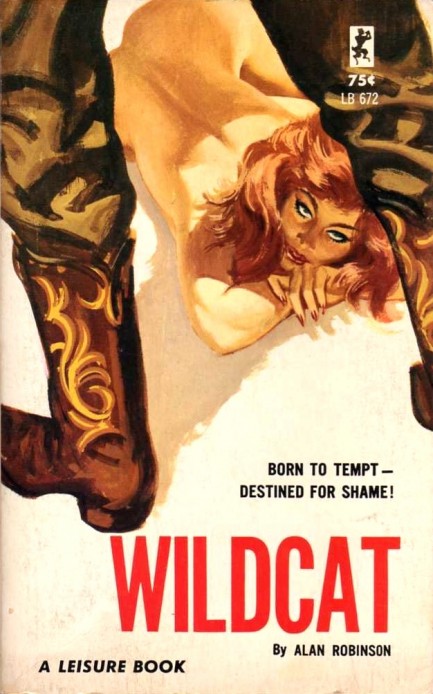
| Vintage Pulp | Jul 22 2014 |

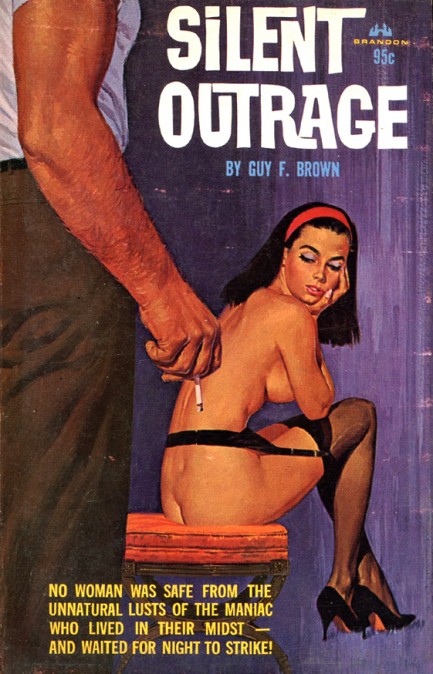
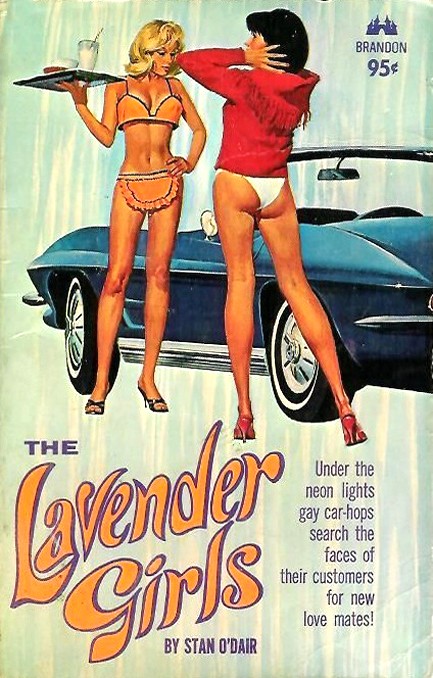
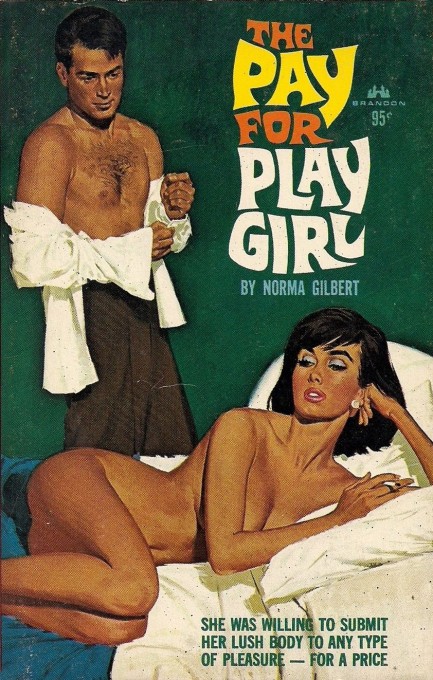
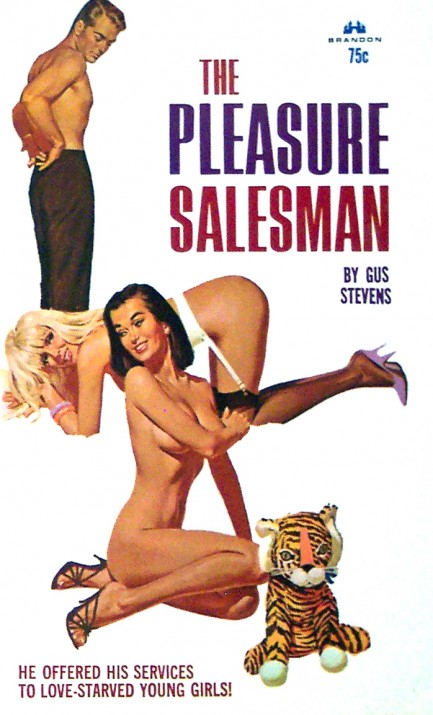
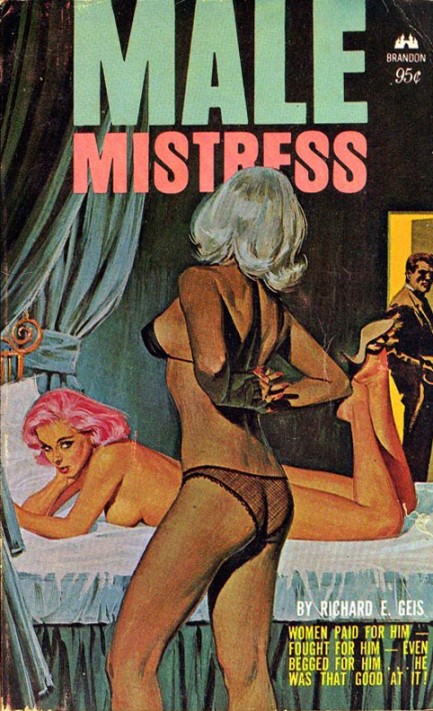
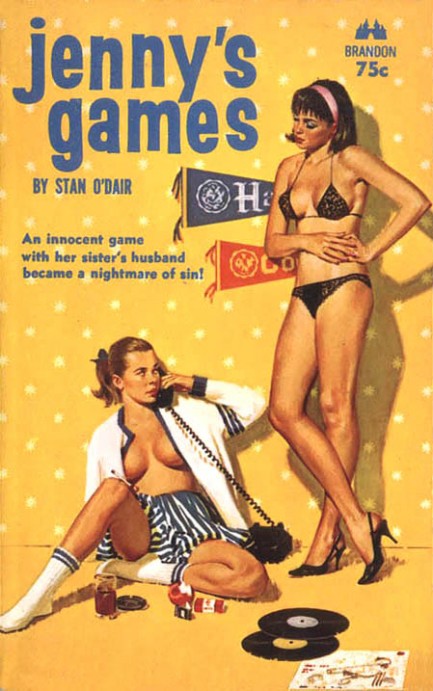
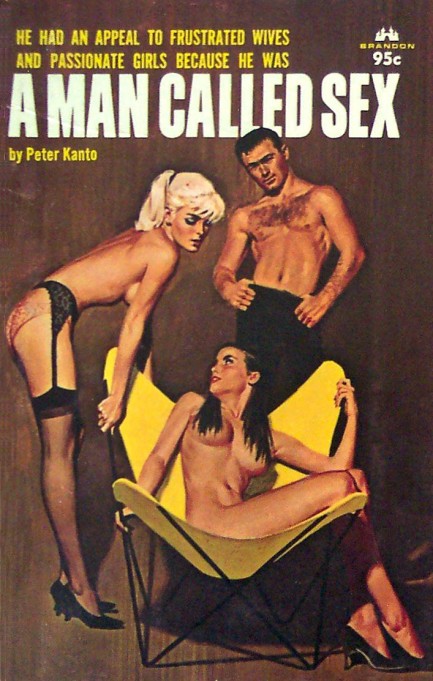
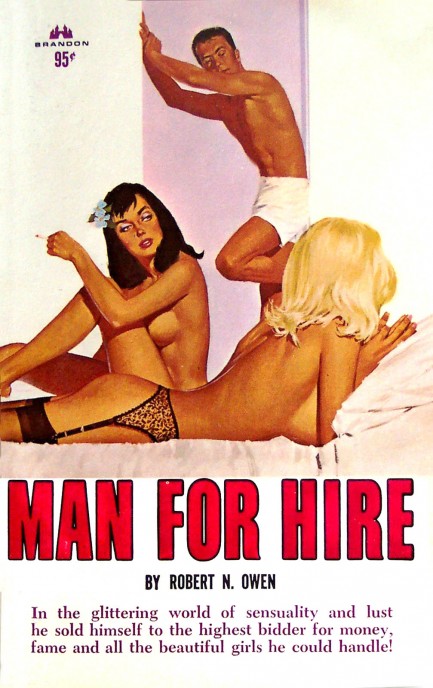
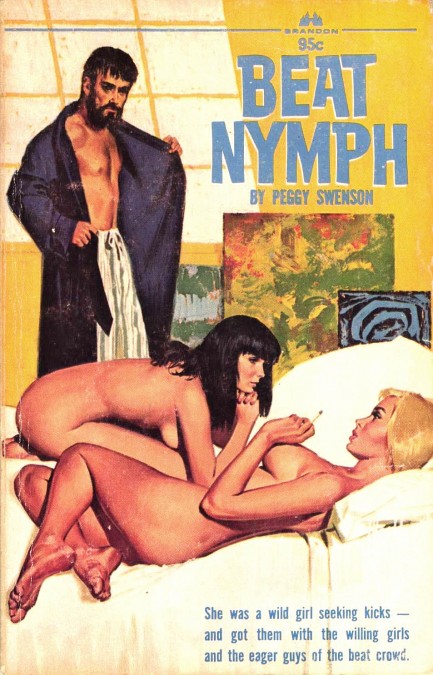
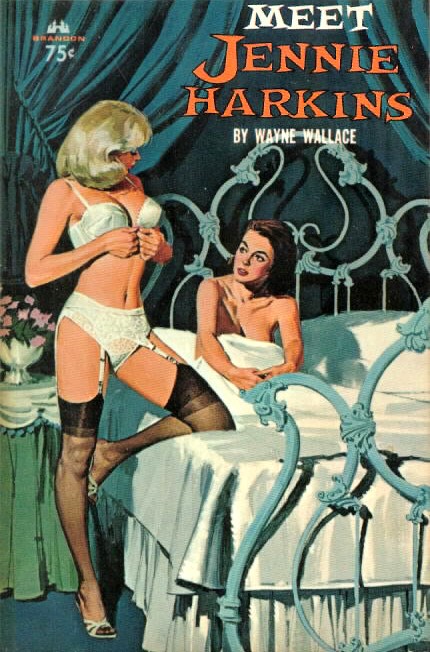
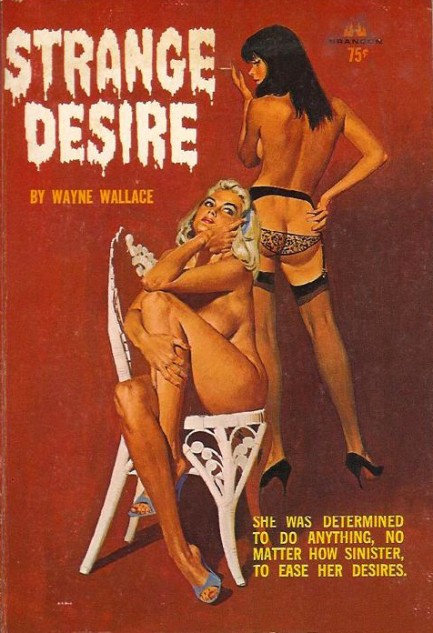
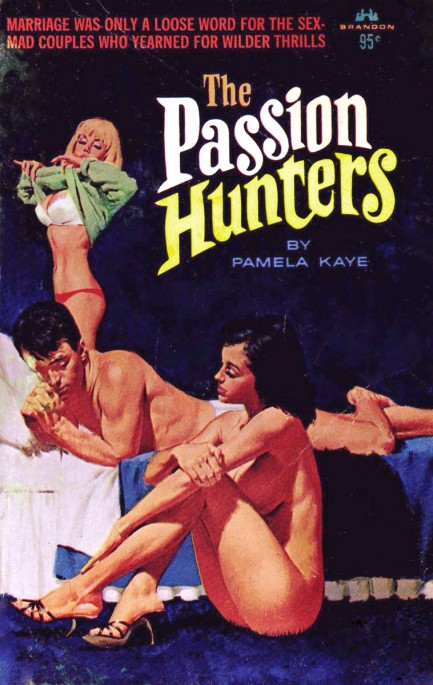
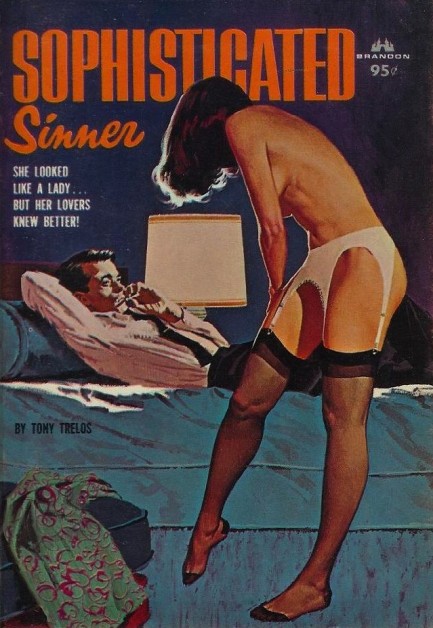
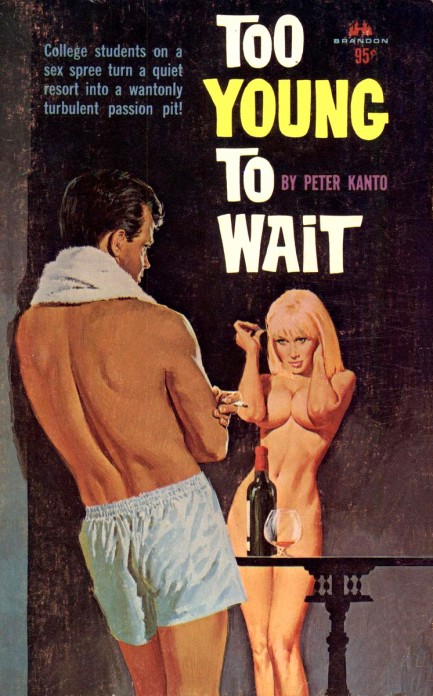
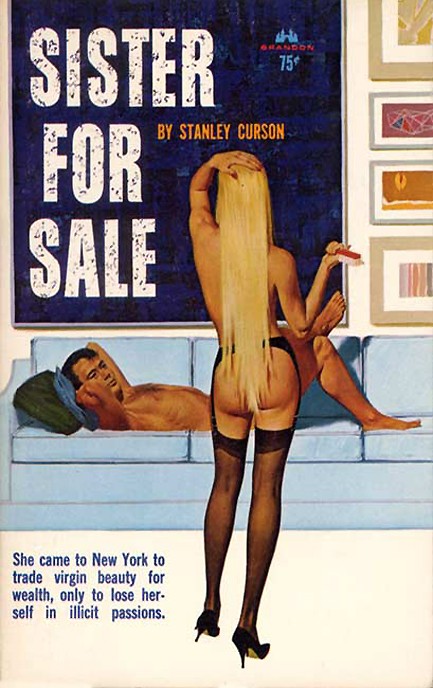
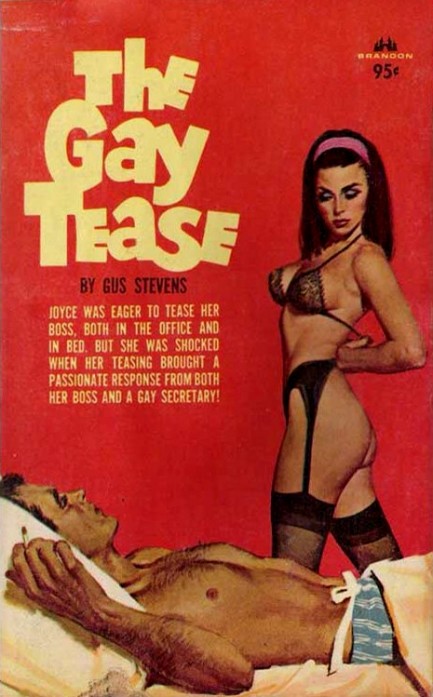
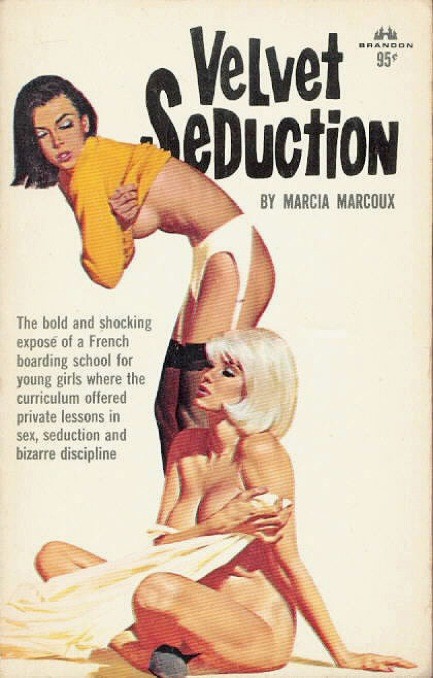
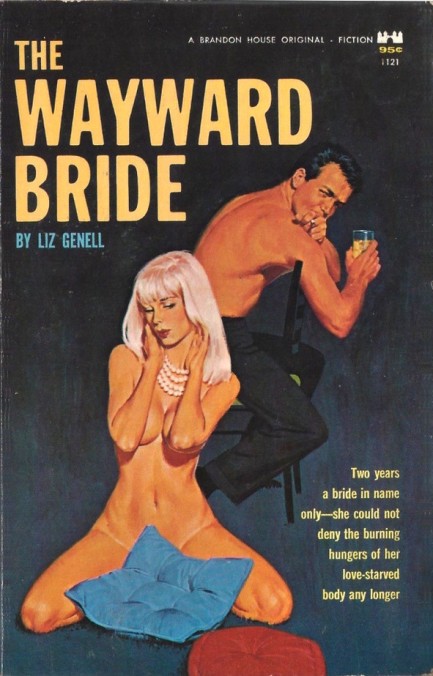
| Vintage Pulp | May 30 2013 |

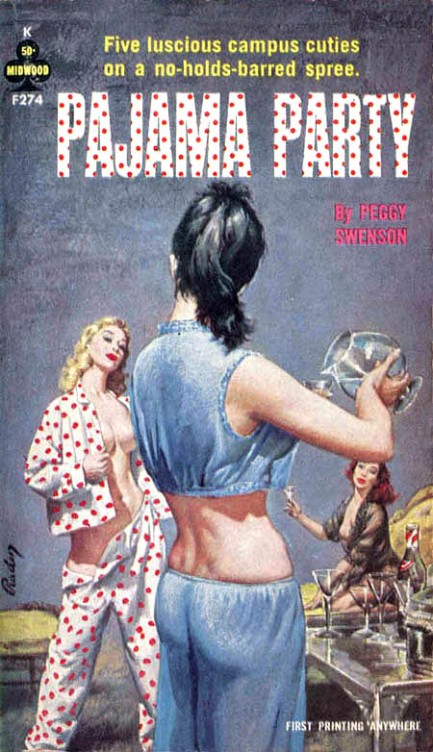
Above is a cover for 1963’s Pajama Party, a book written by Peggy Swenson, who was in reality Richard E. Geis. Interesting fellow, Geis—he specialized in beatnik and counterculture sleaze, churning out lightweight novels like Bongo Bum, Beat Nymph, and Like Crazy, Man, and was indicted for obscenity over a novel called Three-Way Apartment. This was in 1964. Geis went to trial twice, first in California, then in federal court in Iowa. He was convicted but the case made its way to the U.S. Supreme Court where the panel overturned the verdict, thus making Geis’s Three-Way Apartment one of those forgotten but important books that helped free publishing from the grip of reactionary prudes.
After Geis’s close call with the feds he must have felt artistically liberated, because his writing promptly went to the far ends, so to speak, of taste. Some titles: Anal Husbands and Deviant Wives, The Endless Orgy, Women and Bestiality, and, our two favorites—Orality ’69 and its sequel Orality ’70. Pajama Party was not so notable a book as those—five co-eds have a sleepover that involves a pillow fight, skinny-dipping, a striptease contest and a game of dares, before finally getting down to a little Sapphic lust—but we really like the Paul Rader cover, so there you go.
| Vintage Pulp | Jun 21 2010 |

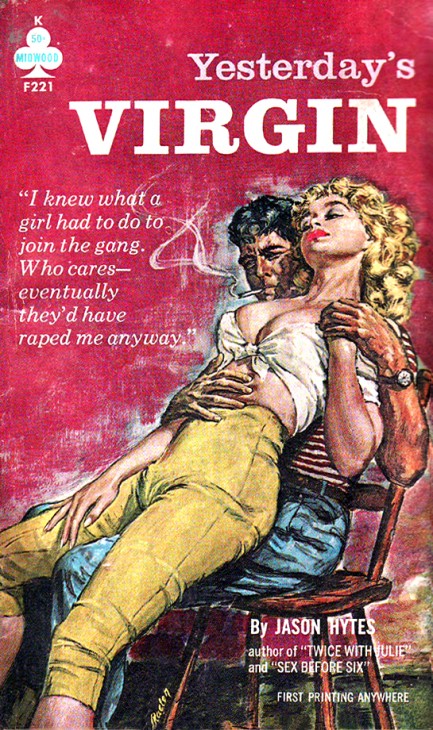
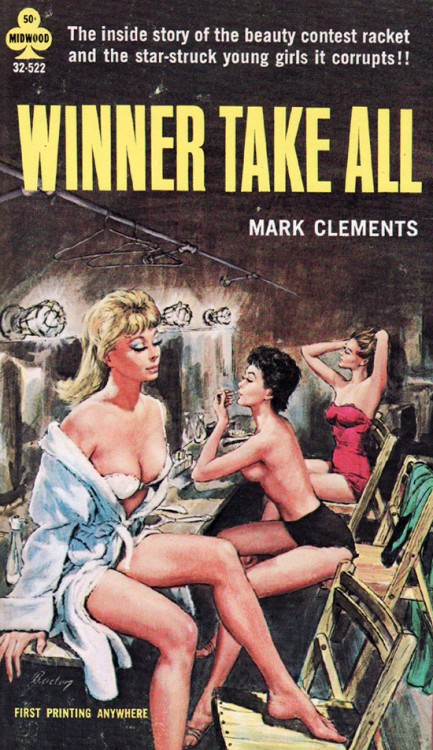
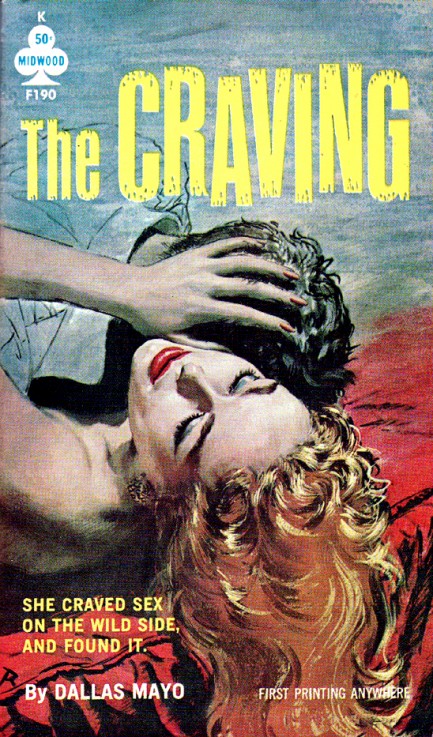
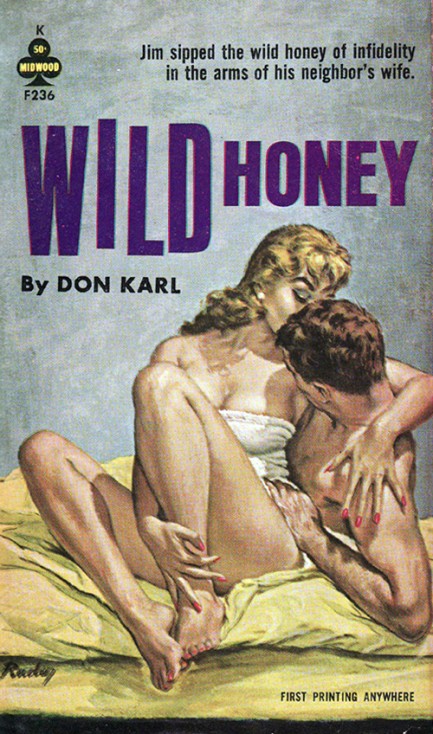
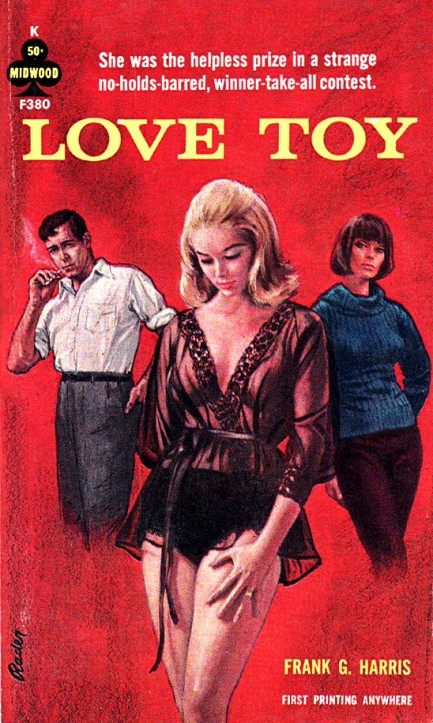
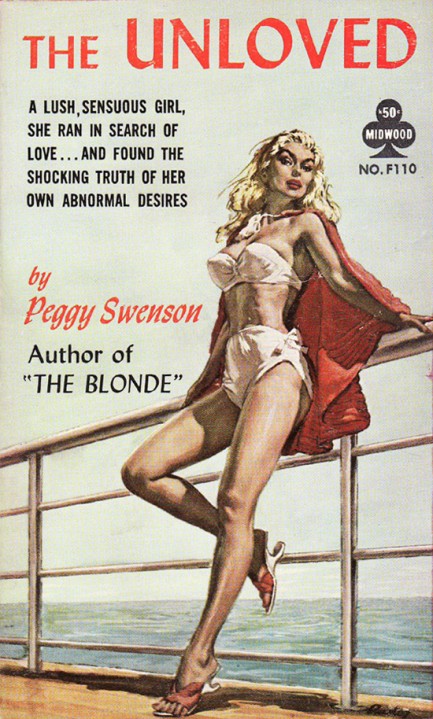
Every once in a while, we like to feature Paul Rader as a reminder what a virtuosic illustrator he was. So here’s another aggregate post, this one of assorted steamy Midwood pulp covers by Rader, circa 1960s. As a side note, you may have noticed our pulp uploader is malfunctioning at the moment, but we’ll get that fixed as soon as we can. Anyone with contributions, please hold, thanks.































